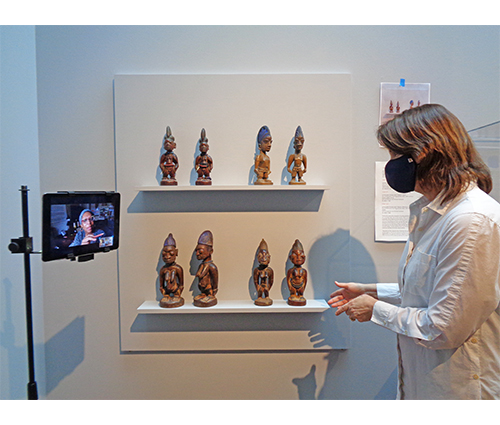
Installing the Arts of Africa
Guest blogger Kelly Holbert is Exhibition Manager at the Smith College Museum of Art
Early in 2021, while the museum was closed to the public, there was a lot of activity taking place behind closed doors. One of the projects was a major change to the third floor galleries. For the first time at SCMA the arts of Africa were integrated into the installation of American and European art. New themes and groupings were conceived by guest curator Dr. Christa Clarke, working with curator of painting and sculpture Danielle Carrabino and associate educator Taiga Ermansons.
Once the object list was finalized, practical “nuts and bolts” questions were raised, such as will all of the works fit in the chosen section of the gallery, and will we need to make new cases and mounts. We used planning tools that included a model of the gallery, Powerpoints of groupings, and a table full of print-outs and notes.


An additional task involved assessing the condition of the objects, especially important for works that had never been on view. Once they were assembled in art storage, collections manager/registrar Deborah Diemente, chief preparator Nikolas Asikis and preparator Matthew Cummings could also consider the best ways to support and display the works in the gallery.


Finally, the time came when walls and pedestals were painted, mounts were made, and wall texts and labels were edited and ready for production. Christa Clarke supervised the installation in person with additional input from doctoral candidate Kymberly Newberry, who was “Zooming in” from UMass, Amherst.
While the many aspects of planning an installation or exhibition are too numerous to mention, I hope this small peek into how a gallery is installed will inspire people to consider the different roles, and range of career choices, that can be found in a museum!

Learn more about the Arts of Africa, c. 1825–1960 installation.